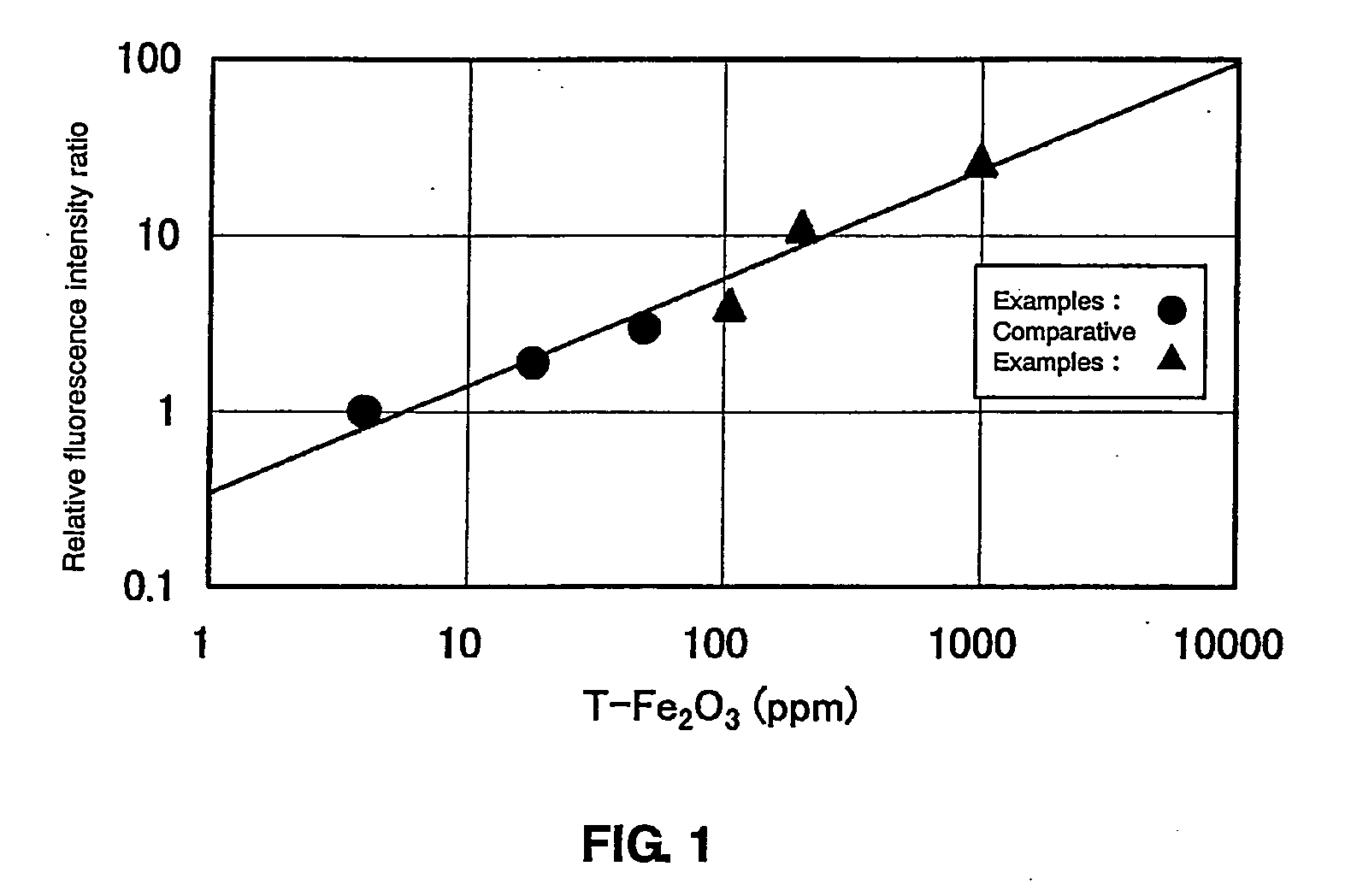Glass Composition
a technology of composition and glass, applied in the field of glass composition, can solve the problems of difficult inability to obtain accurate observation images of the observation object, and inability to observe the fluorescence of the object in some cases, so as to reduce the amount of fluorescence emitted
- Summary
- Abstract
- Description
- Claims
- Application Information
AI Technical Summary
Benefits of technology
Problems solved by technology
Method used
Image
Examples
examples
[0071]Hereinafter, the present invention is described with Examples and Comparative Examples. The present invention, however, is not limited to the following Examples.
(Preparation of Glass Samples)
[0072]Each glass sample was prepared according to the following procedure. As raw materials of the glass, high purity silica (having the T-Fe2O3 content of 0.25 ppm), boric anhydride, aluminum oxide, sodium carbonate, potassium carbonate, lithium carbonate, magnesium oxide, calcium carbonate, strontium carbonate, barium carbonate, zinc oxide, titanium oxide, ferric oxide, carbon and sodium sulfate were used. The above-mentioned raw materials were mixed together to obtain a predetermined glass composition, and a raw material batch (hereinafter, referred to as a batch) was prepared so that the amount of glass to be melted was 400 g.
[0073]The batch thus prepared was melted and refined in a platinum crucible. Firstly, each batch was charged into this crucible, and the crucible was maintained f...
PUM
| Property | Measurement | Unit |
|---|---|---|
| mass % | aaaaa | aaaaa |
| mass % | aaaaa | aaaaa |
| thickness | aaaaa | aaaaa |
Abstract
Description
Claims
Application Information
 Login to View More
Login to View More - R&D
- Intellectual Property
- Life Sciences
- Materials
- Tech Scout
- Unparalleled Data Quality
- Higher Quality Content
- 60% Fewer Hallucinations
Browse by: Latest US Patents, China's latest patents, Technical Efficacy Thesaurus, Application Domain, Technology Topic, Popular Technical Reports.
© 2025 PatSnap. All rights reserved.Legal|Privacy policy|Modern Slavery Act Transparency Statement|Sitemap|About US| Contact US: help@patsnap.com

